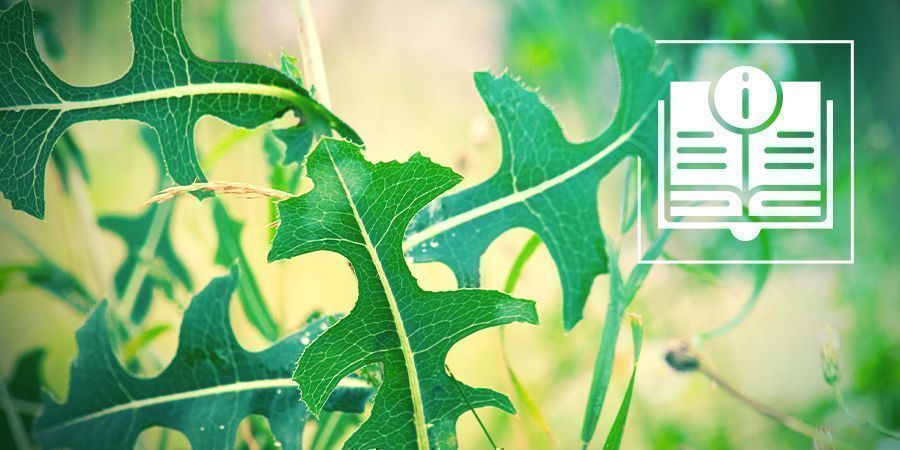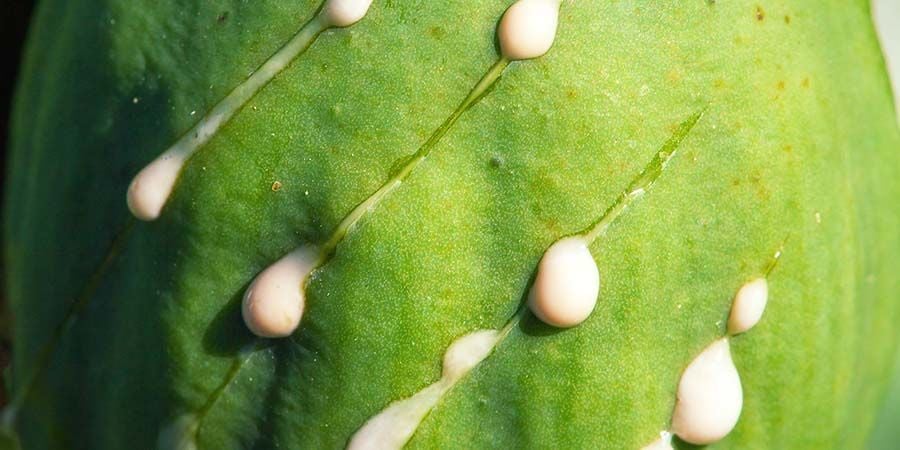Everything You Need To Know About Wild Lettuce
Far from another salad green, wild lettuce produces a viscous type of latex harnessed for its mind-altering effects and unique impact on the central nervous system. Humans have used the plant for hundreds, if not thousands, of years in folk systems across the planet. Continue reading to learn everything you need to know about this fascinating plant species, including where to find it growing in the wild.
WHAT IS WILD LETTUCE?
Wild lettuce has several names, including Lactuca virosa, bitter lettuce, and opium lettuce. The biennial plant belongs to the same genus as salad lettuce (Lactuca sativa), but their traditional uses vary massively. While one provides a tender source of nutrition, the other is primarily used as a holistic herb.
Wild lettuce produces a latex known as lactucarium. The very name “lactuca” means “milky extract”. This bitter-tasting white substance oozes from the leaves of the plant when scratched or cut, quickly turning brown when exposed to the air. Reports compare the smell of this gooey material to that of opium from the poppy species, Papaver somniferum.
Lactucarium contains an array of phytochemicals that may contribute to the overall effects of wild lettuce. Lactucin makes up around 0.2% of the sap. The molecule forms a white crystalline solid upon extraction and belongs to a group of chemicals known as sesquiterpene lactones. A known adenosine receptor agonist, lactucin may underpin the relaxing and soothing effects of wild lettuce.
Caoutchouc, mannitol, and lactucerol make up around 50% of lactucarium composition. As a neutral and insoluble material, lactocrine makes up the bulk of the substance.
SPOTTING WILD LETTUCE
Wild lettuce grows in the wild along the coastal regions of Great Britain. More specifically, the species grows abundantly in the south-east and east of England. It also appears widely across Central and Southern Europe. Further afield, wild lettuce grows in Pakistan, India, Iran, and Australia.
Humans introduced the species to North America, where it now grows wild as a non-native species in California, Iowa, Alabama, Washington, and other regions.
The species favours water-rich environments and can often be found flourishing alongside rivers. Wild lettuce features a bright-green appearance and varies anywhere between 60–200cm in height. Those looking to identify the plant in the wild can often do so by taking a closer look at the leaves. They are oblong and lance-shaped and possess fine teeth-like ridges on the edges.
The underside of each leaf should feature small hairs along the length of the main vein. The lower leaves reach around 25cm in length, while the upper, younger leaves are considerably smaller.
Wild lettuce can be even easier to spot during autumn as plants begin to develop yellow blossoms. The flowers are slightly pale in appearance and share the look of dandelions, with each head featuring between 6–12 flowers. Milky-white sap is another key feature of wild lettuce. When snapped or scored with a blade, the stem should begin to bleed lactucarium.
- Roughly 1–2 metres tall
- Leaves grow all the way up the stalk to the top of the plant
- The stalk is soft and easily penetrated by a nail or pocket knife
- Leaves have a slightly serrated edge and oval shape
- Flowers on the wild lettuce are yellow and similar in appearance to dandelions
- Flowering typically takes place between June and August
HISTORY OF WILD LETTUCE
Reports suggest the use of opium lettuce stretches back into ancient Egypt. Age-old Chinese practices also utilised the juice of the plant as a topical, and the flowers and seeds were used to make liquid preparations.
More recently, 19th-century physicians employed wild lettuce, particularly when they deemed the use of opium and other narcotics unnecessary. They used the plant to soothe the throat, promote a good night’s sleep, and ease the nerves. Wild lettuce also appears in homoeopathy and naturopathy—a system based on the use of natural substances—as an extract called thridace.
EFFECTS OF WILD LETTUCE

Wild lettuce has grabbed the attention of natural psychonauts, ethnobotanists, and those who are generally curious about the mind-altering effects of plants. Active molecules in the sap appear to produce a relaxing, sleepy, and soothing physical effect.
Consumers of wild lettuce tend to use the herb to ease the body into a relaxed state after a long day of pressure and expectations. Wild lettuce can help promote a restful night's sleep with its unique characteristics. Those looking to soothe the nerves and lull the mind into serenity often turn to this herb as well. Intriguingly, wild lettuce also promotes normal menstruation and features strong antibacterial qualities.
- (2006/09/19). Analgesic and sedative activities of lactucin and some lactucin-like guaianolides in mice - ScienceDirect - https://www.sciencedirect.com
- Sima Besharat, Mahsa Besharat, & Ali Jabbari. (2009). Other full case: Wild lettuce (Lactuca virosa) toxicity - https://www.ncbi.nlm.nih.gov
you might also like




 Seedshop
Seedshop Headshop
Headshop Vaporshop
Vaporshop Healthshop
Healthshop Smartshop
Smartshop Shroomshop
Shroomshop Plantshop
Plantshop United States
United States





















